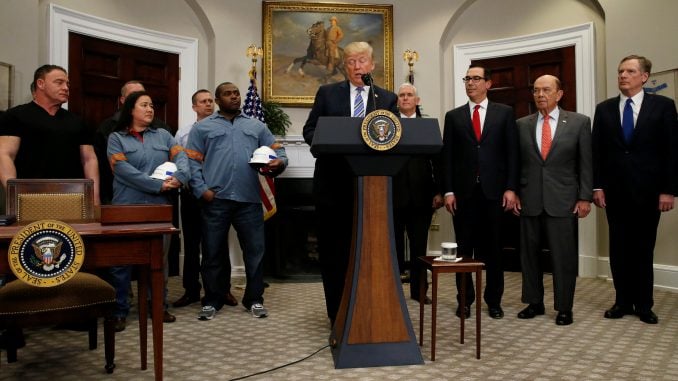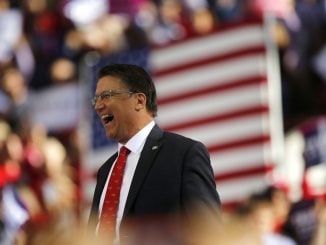
WASHINGTON, D.C. — U.S. consumer prices increased marginally in February amid a decline in gasoline prices and a moderation in the cost of rental accommodation, the latest indication that an anticipated pickup in inflation likely will be only gradual.
Strong inflation numbers in January had sparked fears that price pressures were accelerating, leading financial markets to expect a more aggressive pace of interest rate increases from the Federal Reserve than is currently anticipated.
“These figures should satisfy Fed policymakers that inflation is not too cold, as last spring’s numbers hinted at, or too hot, as might have been inferred from the January print,” said Michael Feroli, an economist at JPMorgan in New York.
The Labor Department said on Tuesday its Consumer Price Index rose 0.2 percent last month after jumping 0.5 percent in January. In the 12 months through February, the CPI rose 2.2 percent, up from 2.1 percent in January as the flat reading from last year dropped from the calculation.
Excluding the volatile food and energy components, the CPI gained 0.2 percent after accelerating 0.3 percent in January. The year-on-year increase in the so-called core CPI was unchanged at 1.8 percent in February.
Last month’s increase in consumer prices was in line with economists’ expectations. The Fed tracks a different index, the personal consumption expenditures price index excluding food and energy, which has consistently undershot the central bank’s 2 percent target since mid-2012.
The dollar slipped against a basket of currencies on the inflation data. The greenback was also hurt by President Donald Trump’s firing of Secretary of State Rex Tillerson after a series of public rifts over policy on North Korea, Russia and Iran. U.S. Treasury prices rose while stocks on Wall Street fell.
FULL EMPLOYMENT
The CPI report came on the heels of data last Friday showing a deceleration in wage growth in February as well as a downward revision to January’s increase in average hourly earnings. Average hourly earnings rose 2.6 percent on an annual basis in February, stepping down from January’s 2.8 percent increase.
Against the backdrop of a tightening labor market and strong economy, the Fed is widely expected to increase interest rates at its March 20-21 meeting.
Given the steady price gains and moderate wage inflation some economists did not believe the Fed would upgrade its 2018 interest rate forecast at next week’s policy meeting
The central bank has forecast three rate hikes this year. Many economists expect that at some point it will raise its projection to four rate increases this year amid optimism that the robust labor market will start boosting wage growth at least by the second half of the year. Policymakers consider the labor market to be near or a little beyond full employment.
The jobless rate is at a 17-year low of 4.1 percent and economists expect it to drop to 3.5 percent by year-end. A weakening dollar and fiscal stimulus in the form of a $1.5 trillion tax cut package and increased government spending are also seen spurring inflation.
A survey of small businesses published on Tuesday showed the share of owners reporting higher selling prices in February hit its highest level since July 2014. The NFIB survey also showed nearly a third of owners reported raising compensation to retain or attract workers last month, the largest share in more than 17 years.
“Solid domestic economic momentum and the impulse from oncoming fiscal stimulus will underpin a gradual build in inflation toward the Fed’s 2 percent target,” said Gregory Daco, chief economist at Oxford Economics in New York.
“In this environment, we expect the Fed will raise interest rates four times this year.”
Gasoline prices fell 0.9 percent in February after rebounding 5.7 percent in January. Food prices were unchanged, with the cost of food consumed at home dropping 0.2 percent. Food prices rose 0.2 percent in January.
The core CPI was restrained by a moderation in rents. Owners’ equivalent rent of primary residence, which is what a homeowner would pay to rent or receive from renting a home, rose 0.2 percent last month after advancing 0.3 percent in January.
Households also paid less for healthcare. Prices for new motor vehicles fell 0.5 percent, the biggest drop since August 2009, after slipping 0.1 percent in January. Used car and trucks prices declined after four straight monthly increases.
Apparel prices continued to march higher, rising 1.5 percent in February after surging 1.7 percent in January. The cost of motor vehicle insurance rose by a record 1.7 percent last month. The cost of airline fares rebounded after falling in February.



